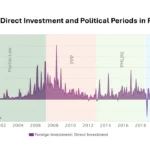Over the past four decades, Pakistan’s trade landscape has evolved significantly, reflecting the interplay of economic policies, global trends, and political regimes. From 1985 to 2024, exports grew from $3,070 million to $30,675 million, driven primarily by textiles and agricultural products. Imports, however, rose from $5,634 million to $54,779 million, highlighting the economy’s dependency on energy, machinery, and consumer goods.
10 Key Observations of Pakistan’s Import and Export Trends
- Exports grew tenfold between 1985 and 2024, dominated by textiles and agriculture.
- Imports outpaced exports, growing nearly tenfold during the same period, reflecting economic dependency.
- The trade deficit expanded from $2,564 million to over $24,000 million.
- Military regimes emphasized export-led growth but limited industrial diversification.
- Civilian governments prioritized privatization but struggled with policy consistency.
- Global crises, including the financial downturn of 2008, significantly impacted trade performance.
- Energy shortages during the 2000s hindered industrial output and export growth.
- Rising oil prices and consumption drove import bills to record levels.
- The COVID-19 pandemic disrupted trade but accelerated digital and export recovery.
- Long-term challenges include export diversification, energy independence, and policy stability.
Pakistan’s trade journey from 1985 to 2024 demonstrates the interplay between political governance and economic outcomes. Military regimes often focused on controlled liberalization, while civilian governments introduced reforms but struggled with inefficiencies. The widening trade deficit underscores the need for consistent trade policies, stable governance, and long-term economic planning to ensure sustainable progress.

